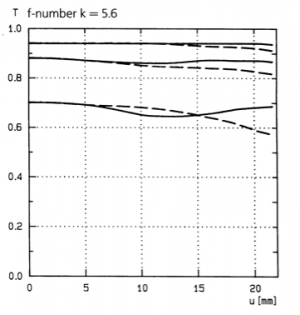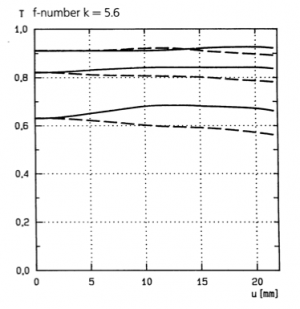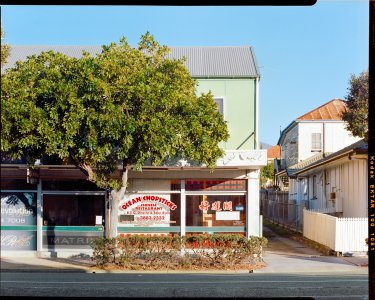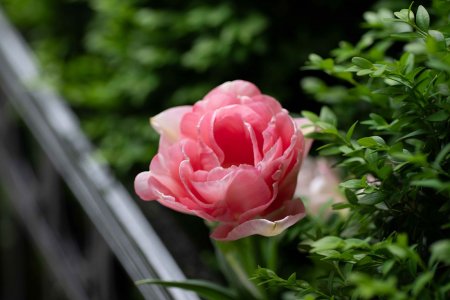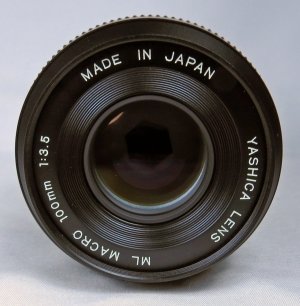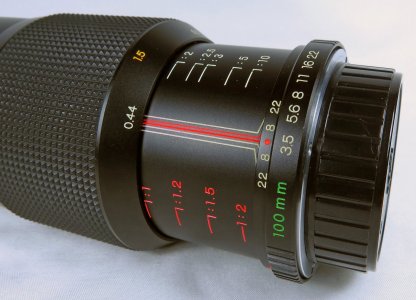There are several versions of the 120/4 mp as listed on the Zeiss site:
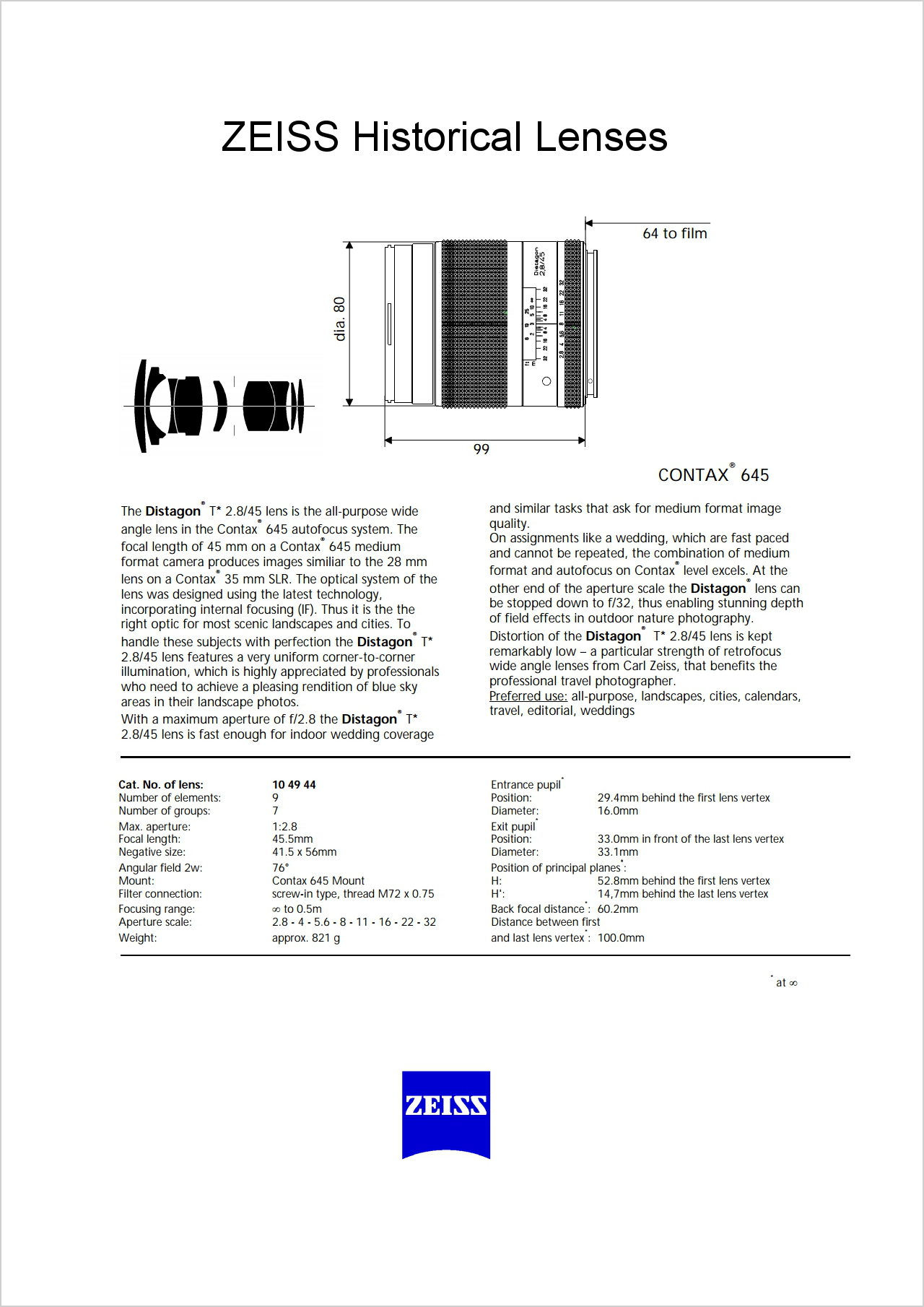
 www.zeiss.com
www.zeiss.com
Contax 645 version is 8/5 elements/groups, all the Hassy variants are 6/4. The C/Y 100/2.8 is 7/7 with a floating element. The Classic (Cosina-made) 100/2 Makro Planar is 9/8.
Yet, otherwise identical 120/4 Hassy versions ( in terms of elements/groups) have wildly differing MTF:
This is the CF:
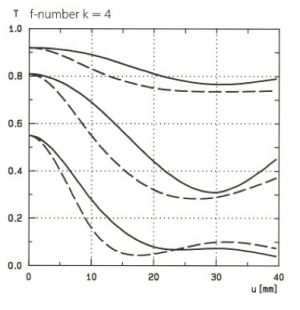
This is CFe:
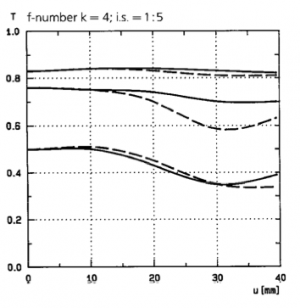

Historical Products Photography
Find always the latest data sheets, brochures, manuals and more.
Contax 645 version is 8/5 elements/groups, all the Hassy variants are 6/4. The C/Y 100/2.8 is 7/7 with a floating element. The Classic (Cosina-made) 100/2 Makro Planar is 9/8.
Yet, otherwise identical 120/4 Hassy versions ( in terms of elements/groups) have wildly differing MTF:
This is the CF:

This is CFe:

Benjamin Marks
Mentor
Lovely! As an aside, I am often amazed by the depth of knowledge on a variety of subjects that RFF'ers bring to the table here.
For me, the 100 will primarily be a portrait lens. I know in a technical sense that the macro lenses are optimized for the larger reproduction ratios. But in practice, my subjects have never complained. Pentax used to have a 100-A/2.8 that was a straight up short tele. I like that lens so much I bought two of them "just in case." The Pentax AF lens in that focal length is a "macro" that I have used for portraiture successfully on the K-1.
The Zeiss SLR designs were always "unobtainium" for me when they were new. Now with the Z8, I believe I will indulge a bit. But since I am getting the adapter . . . you know, there might be a Yashica or two waiting for me if any of them have a "best of breed" reputation.
For me, the 100 will primarily be a portrait lens. I know in a technical sense that the macro lenses are optimized for the larger reproduction ratios. But in practice, my subjects have never complained. Pentax used to have a 100-A/2.8 that was a straight up short tele. I like that lens so much I bought two of them "just in case." The Pentax AF lens in that focal length is a "macro" that I have used for portraiture successfully on the K-1.
The Zeiss SLR designs were always "unobtainium" for me when they were new. Now with the Z8, I believe I will indulge a bit. But since I am getting the adapter . . . you know, there might be a Yashica or two waiting for me if any of them have a "best of breed" reputation.
Freakscene
Obscure member
The 100 Makro with the floating element is even throughout the range. The 60mm C Makro has no floating element and is optimised close up. The thing to keep an eye out for is the information on the ‘full’ MTF charts which should include the image height (distance at which the MTF was measured or calculated) and the frequencies - Zeiss was weirdly inconsistent in what frequencies the lines represent.Lovely! As an aside, I am often amazed by the depth of knowledge on a variety of subjects that RFF'ers bring to the table here.
For me, the 100 will primarily be a portrait lens. I know in a technical sense that the macro lenses are optimized for the larger reproduction ratios. But in practice, my subjects have never complained. Pentax used to have a 100-A/2.8 that was a straight up short tele. I like that lens so much I bought two of them "just in case." The Pentax AF lens in that focal length is a "macro" that I have used for portraiture successfully on the K-1.
The Zeiss SLR designs were always "unobtainium" for me when they were new. Now with the Z8, I believe I will indulge a bit. But since I am getting the adapter . . . you know, there might be a Yashica or two waiting for me if any of them have a "best of breed" reputation.
Show us some photos once you have them.
Marty
Benjamin Marks
Mentor
The adapter for the 50/1.7 arrived this afternoon. Too late for golden hour pix alas, given the day's other obligations. I will take it out to a dinner with friends. I am away from home for about 10 days. . . ordering up the 100 will have to wait until I am closer to returning. But having the adapter in hand is an invitation to all kinds of trouble! Heh, heh. Unobtainium, NO MORE!
zhanteh
Member
Benjamin Marks
Mentor
This is a phenomenal lens, unlike the 60 Makro it has a floating element so it excels at all distances
Benjamin Marks
Mentor
Couldn't agree more. This Saturday, if the weather holds, I will be doing some portraits with it and with the Z8's 105/2.8 macro and a Leica 90 AA. I expect to be able to post some examples next week. I have posted a couple more examples in this thread here:This is a phenomenal lens, unlike the 60 Makro it has a floating element so it excels at all distances
Nikon Z8 w/Adapted Lenses (Leica M+R, Pentax, Konica etc.)
Last edited:
Looking forward to it!!
BTW my comment about the 60 is simply that it doesn’t have a floating element. It’s a fine macro too and one of my favorite lenses.
BTW my comment about the 60 is simply that it doesn’t have a floating element. It’s a fine macro too and one of my favorite lenses.
Freakscene
Obscure member
I see you live in Brisbane! I ate at this place a number of times.A bit of a different use case, I use the Contax CarlZeiss Makro 60mm 2.8 on my Fuji X-T5 to scan 4x5 negatives.
6 shots stitched together in Lightroom. Works great so far.
I suspect the native modern Fuji macro glasses might give me better results but never bothered to try it out.
View attachment 4834976
Marty
tcmx3
Member
Couldn't agree more. This Saturday, if the weather holds, I will be doing some portraits with it and with the Z8's 105/2.8 macro and a Leica 90 AA. I expect to be able to post some examples next week. I have posted a couple more examples in this thread here:
Nikon Z8 w/Adapted Lenses (Leica M+R, Pentax, Konica etc.)
3 greats.
Of course the Contax and the Nikon make the 90AA look kind of small in comparison lmao.
hap
Well-known
I have a Leica R 100 2.8 macro apo elmarit just back from DAG. Havent used yet. Will probably used first on an R cam and later R>M adapter with M240.The 100 Makro with the floating element is even throughout the range. The 60mm C Makro has no floating element and is optimised close up. The thing to keep an eye out for is the information on the ‘full’ MTF charts which should include the image height (distance at which the MTF was measured or calculated) and the frequencies - Zeiss was weirdly inconsistent in what frequencies the lines represent.
Show us some photos once you have them.
Marty
The lens was obtained cheaply mostly because rough cosmetics....and some unknown shmutz in the lens. DAG completely cleaned and lubed the relatively long focus throw. I don't know about the c/y 100 as I only own a c/y 135.
That one is a true gem! As is the 135/2.8 c/y Sonnar.
Godfrey
somewhat colored
I have the earlier Macro-Elmar-R 100mm f/4 in short mount (for use with the Leica Focusing Bellows-R). It's a super quality lens, and on the bellows nets from infinity to 1:1 focus range. I never used it with Leica R bodies, but used it often with the Leica SL when I had that; now use it with the M10-M and M10-R. Obviously, in this configuration, it's best used on a tripod or copy stand for macro and tabletop work, but it does well at landscape too on a tripod.I have a Leica R 100 2.8 macro apo elmarit just back from DAG. Havent used yet. Will probably used first on an R cam and later R>M adapter with M240.
The lens was obtained cheaply mostly because rough cosmetics....and some unknown shmutz in the lens. DAG completely cleaned and lubed the relatively long focus throw. I don't know about the c/y 100 as I only own a c/y 135.
When I bought it, these things were ferociously undervalued since the R system had just been discontinued. I bought this one in mint condition, in the original box with the bellows and all the bits and booklets, for less than $400 IIRC. It's been an invaluable resource over the past decade.
G
tcmx3
Member
Leica R stuff used to be good value. Then people figured out they make good video lenses.
Contax stuff seems to be a relatively good bargain still. It seems to have gone the opposite direction. As F mount Zeiss lenses nosedived in value it also seemed to push down Contax, which was always viewed as a pretty good alternative.
Contax stuff seems to be a relatively good bargain still. It seems to have gone the opposite direction. As F mount Zeiss lenses nosedived in value it also seemed to push down Contax, which was always viewed as a pretty good alternative.
zhanteh
Member
I see you live in Brisbane! I ate at this place a number of times.
Marty
Hey there, small world!
This photo is part of a series I am working on.
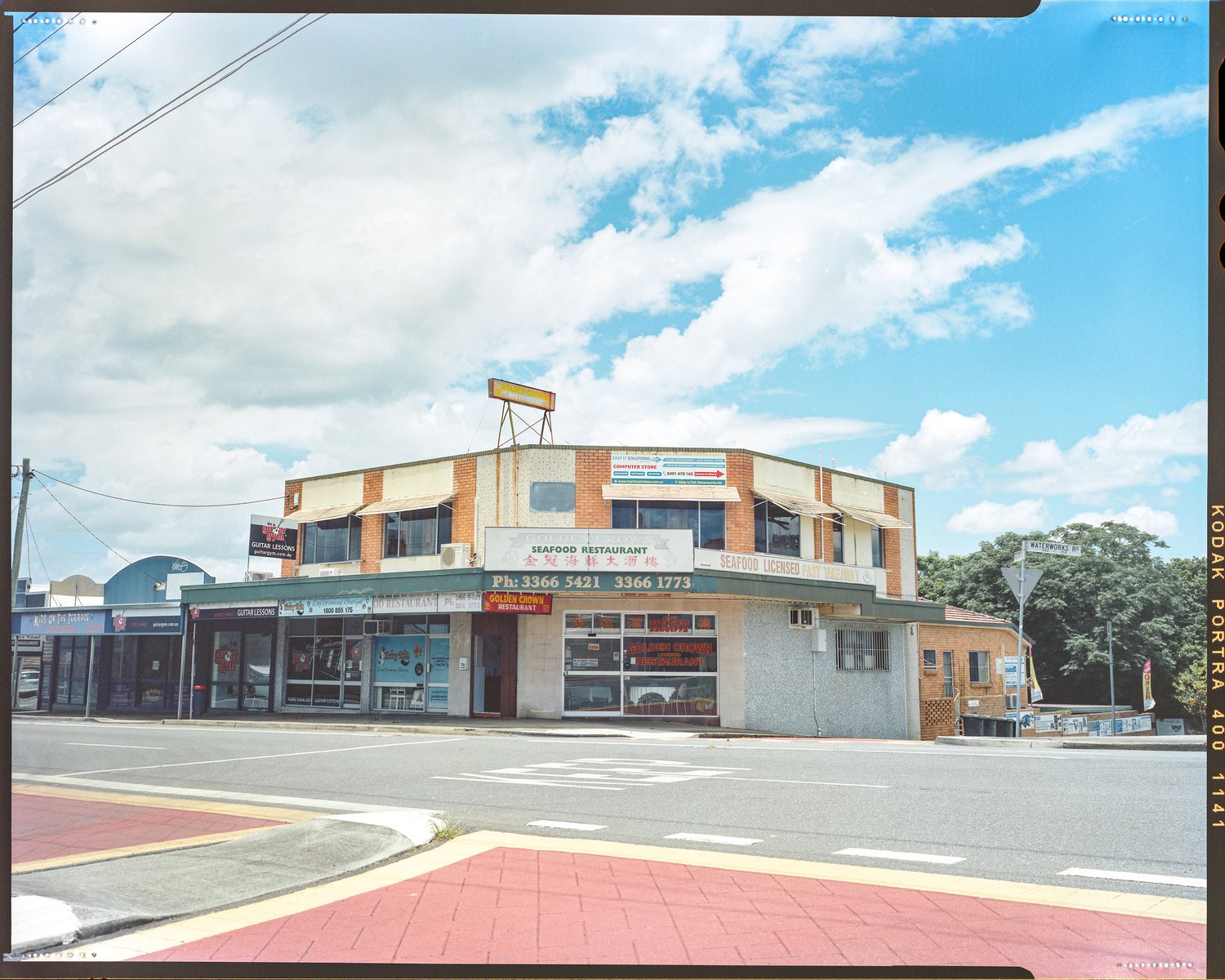
Where are the Lemon Chickens? Photo Project — Zhan Teh Photography
Lemon Chicken while synonymous with traditional Australian Chinese Restaurants is not an authentic Chinese dish. Time will tell if Lemon Chicken along with these old-school Chinese restaurants will be a distant memory. Or perhaps a more hopeful outlook – being revitalised by some venturesome soul t
There should be other places you are familiar with
Leica R stuff used to be good value. Then people figured out they make good video lenses.
Contax stuff seems to be a relatively good bargain still. It seems to have gone the opposite direction. As F mount Zeiss lenses nosedived in value it also seemed to push down Contax, which was always viewed as a pretty good alternative.
The exotics in c/y continue to be pricey, like the 28/2, 35/1.4, and the 21/2.8. This is why I stick with the f/2.8s, it is also nice they are considerably smaller/lighter.
blumoon
Well-known
Archiver
Mentor
Contax Zeiss is going up for the same reason as Leica R. Leica R, Canon FD and Contax are the darlings of lower-mid budget productions for those who want a more organic look on digital cinema cameras. Many Canon FD lenses are very similar to Canon cinema lenses, and the Contax Zeiss range are similar to Zeiss Superspeeds. Some companies are rehousing entire sets of Olympus and Minolta lenses for cinema use, too.Leica R stuff used to be good value. Then people figured out they make good video lenses.
Contax stuff seems to be a relatively good bargain still. It seems to have gone the opposite direction. As F mount Zeiss lenses nosedived in value it also seemed to push down Contax, which was always viewed as a pretty good alternative.
I'm so tempted to build a set of Contax Zeiss for this purpose, but am leaning towards the Zeiss Classics for the EF electronic coupling, more aperture blades and lesser chance of balsam separation and other issues with older lenses.
Share:
-
This site uses cookies to help personalise content, tailor your experience and to keep you logged in if you register.
By continuing to use this site, you are consenting to our use of cookies.


